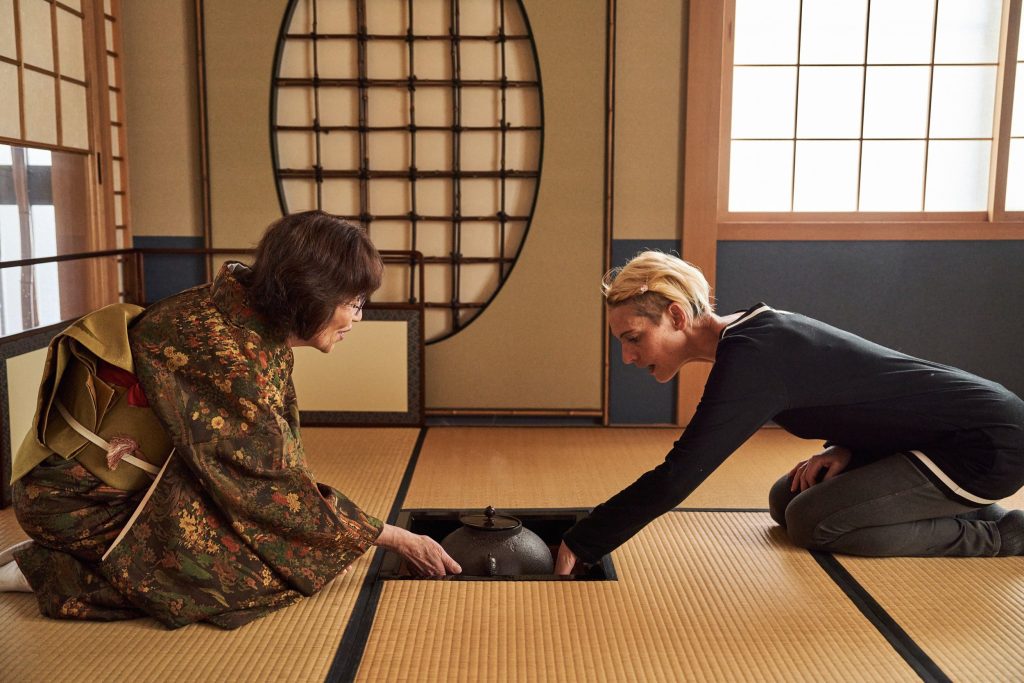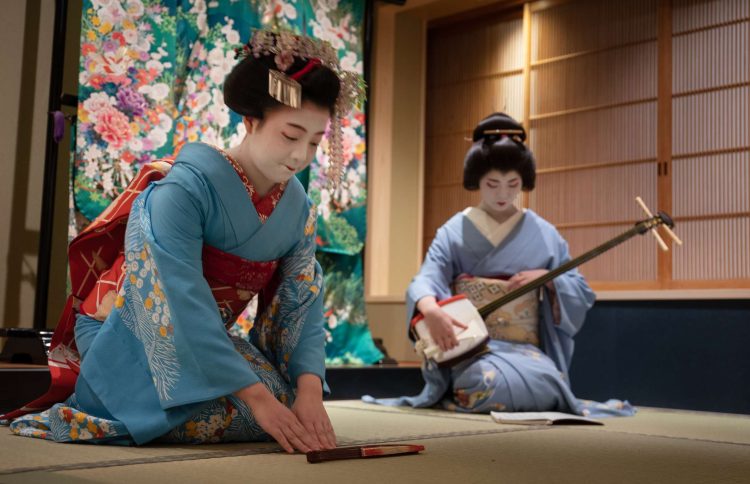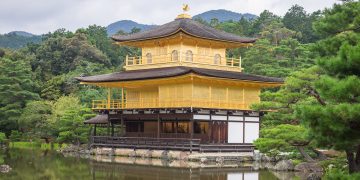Kyoto whispers where other cities shout. Amid the raked gravel gardens, moss-covered temples, and sliding paper doors of Japan’s ancient capital, some of the country’s most profound cultural experiences unfold quietly. Chief among them is the traditional Japanese tea ceremony—called chanoyu, sado, or chado—a graceful ritual of presence, hospitality, and mindfulness. But for many travelers, this meditative experience has seemed frustratingly out of reach unless booked through pricey tour packages or hotel concierges. That’s changing. In 2025, Kyoto’s tea culture is becoming more open and accessible to independent travelers. With a bit of planning, etiquette awareness, and cultural sensitivity, you can now join a genuine tea ceremony at a temple or tea house—no guide, no tour bus, just you and the quiet precision of Japanese hospitality.
What Exactly Is a Tea Ceremony—and Why Does It Matter?
At first glance, a tea ceremony may appear deceptively simple. Powdered green tea (matcha) is whisked with hot water and served in a ceramic bowl. But beneath that simplicity lies an intricate world of seasonal aesthetics, social harmony, and spiritual mindfulness developed over centuries. Rooted in Zen Buddhism, the tea ceremony is not about quenching thirst—it’s about honoring the present moment and the people sharing it.
Every element matters: the handmade cup, the calligraphy scroll in the alcove, the seasonal flower, the guest’s bow, the host’s gestures. Even the silences have shape. It’s this reverence for detail and quiet grace that attracts travelers seeking something deeper than sightseeing. And while traditional ceremonies used to be private or invite-only, Kyoto’s cultural stewards now offer more opportunities to experience them respectfully, independently, and authentically.
Where to Find Self-Booked Tea Ceremonies in Kyoto
Kyoto offers dozens of opportunities to join a tea ceremony without a formal tour. These experiences vary from temple-hosted gatherings to modern tea salons in machiya townhouses. Some are deeply formal, while others are designed for curious beginners. The key is knowing where to look and what to expect.
1. Temples with Public Tea Services
Some temples in Kyoto offer open tea services that visitors can book directly or attend without prior arrangement. These include:
- Kodaiji Temple: In the Higashiyama district, Kodaiji’s gardens include a tea house where visitors can participate in casual ocha-kai (tea gatherings). The atmosphere is serene, and staff may explain basic steps in simple English. No guide necessary.
- Shoren-in Monzeki: A less touristy temple with a lovely tea house overlooking a moss garden. On certain days, they serve matcha and wagashi (Japanese sweets) to visitors for a modest fee, and signage is often in English.
- Honen-in: Located near the Philosopher’s Path, this Zen temple occasionally hosts informal tea services in its garden teahouse. Attendees quietly enjoy seasonal sweets and matcha in a spiritual setting.
2. Independent Tea Houses (Chashitsu) Offering Open Sessions
Modern tea instructors and cultural centers have created spaces that welcome foreigners without compromising authenticity:
- Camellia Flower Teahouse: Near Ninenzaka, Camellia hosts walk-in sessions in English, taught by instructors trained in Urasenke—the most widespread tea school. While polished for visitors, it retains traditional steps and mindfulness.
- En Tea Ceremony Experience at Kinkakuji: Situated near the Golden Pavilion, this spot lets you book solo or small-group ceremonies online. They walk you through etiquette, serve seasonal wagashi, and conduct a proper, slow tea ritual in tatami rooms.
- Tea Ceremony KOTO in Gion: Run by tea masters trained in Kyoto schools, this option combines traditional clothing rentals with tea participation—but you can attend just the tea ceremony if preferred.
3. University or Cultural Center Tea Rooms
Some cultural exchange centers and universities offer public access to tea ceremony demonstrations for minimal fees. These are not always well advertised but are ideal for budget-conscious travelers:
- Kyoto International Community House (KOKOKA): Offers regular cultural events including beginner-friendly tea demonstrations. While often booked in advance, walk-ins are sometimes welcome.
- Kyoto Art Center: Occasionally runs tea culture workshops open to the public, focusing on seasonal styles or specific schools of tea practice.
How to Book Without a Tour Guide
Most independent tea houses and temple experiences can be booked online. Some use third-party platforms like JapanTravel, Klook, or Rakuten Experiences, but many have direct reservation forms in English. If you’re already in Kyoto, you can also walk into some locations, especially in Gion or around Kiyomizu, and inquire about same-day availability. Just remember: while walk-ins are welcome at a few places, booking ahead is best—especially in peak cherry blossom or autumn foliage seasons.
Search Tips for Booking Platforms:
Use search terms like “Kyoto tea ceremony reservation English,” “Gion matcha experience,” or “Japanese tea house Kyoto solo traveler.” Add the current year to see the most up-to-date listings, as many tea houses refine their availability monthly.

Etiquette Essentials for First-Time Guests
Joining a tea ceremony—even a casual one—requires cultural mindfulness. Here are the basics that every independent traveler should know:
- Dress Modestly: You don’t need a kimono, but wear clean, respectful clothes. Avoid loud patterns or logos.
- Remove Shoes: You’ll always be asked to remove your shoes before entering the tea room. Clean socks are a must.
- Bowing: Upon entering the room, bow slightly toward the host. Before and after drinking, bow again with appreciation.
- Wagashi First: If served a sweet before the tea, eat it slowly—it balances the bitterness of the matcha.
- Turning the Bowl: When offered the tea, lift the bowl with both hands, bow slightly, then turn it slightly clockwise before drinking. This avoids drinking from the front of the bowl—a sign of respect to the host.
- Silence and Stillness: Don’t speak unless prompted. The ceremony emphasizes quiet reflection. Listen to the sounds: the water boiling, the bamboo whisk, the rustle of kimono fabric.
Language Prep That Helps
You don’t need to speak Japanese fluently to attend, but a few phrases will show respect and often earn warm smiles:
- “Hajimemashite” (Nice to meet you)
- “Arigatou gozaimasu” (Thank you very much)
- “Oishii desu” (It’s delicious)
- “Kekko na otemae deshita” (A traditional phrase praising the host’s performance—used at the end of the ceremony)
Having a small paper notebook or translation app ready helps in more formal settings where signs or instructions may be minimal.
Ideal Times and Seasons for Tea Ceremonies
Every season in Kyoto offers its own flavor of the tea ceremony:
- Spring (March–May): Cherry blossoms inspire floral-themed wagashi and lighter tea utensils. Book early.
- Summer (June–August): Cold matcha and fans are introduced; ceremonies are more airy and minimalist.
- Autumn (September–November): Maple leaf sweets and warm colors dominate the décor. A magical time for temple garden settings.
- Winter (December–February): Fires are lit, and guests huddle in silence with warm bowls of thick, frothy matcha. It’s the most intimate season.
Ceremonies typically take place in the morning or mid-afternoon. Avoid late afternoon bookings unless clearly marked, as traditional practice follows a mid-day rhythm.
For Whom This Experience Truly Resonates
This journey is ideal for independent travelers who seek silence over spectacle, grace over grandiosity. It’s for those who find pleasure in watching steam rise from a tea bowl, who want to understand Japan from the inside out—not just from its architecture or shrines, but through the rhythm of ritual.
Whether you’re a solo traveler on a mindful path, a couple looking to slow down in the middle of a fast-paced trip, or a culture lover eager to learn from the source, Kyoto’s open tea ceremony offerings can ground your journey in something unforgettable.
Conclusion: Slowing Down to Sip the Spirit of Kyoto
Kyoto doesn’t ask you to conquer it with an itinerary. It invites you to sit, breathe, and notice. The tea ceremony, open and accessible in 2025 more than ever, is your gateway to this slower rhythm. By skipping the tour and booking your own path, you engage with the city on its terms: quietly, respectfully, and with presence. You don’t need a guide to find grace—you just need to be willing to pause. In that moment of pause, as matcha meets your lips in a hushed tatami room, you might feel it: Kyoto not as a destination, but as a way of being.





















